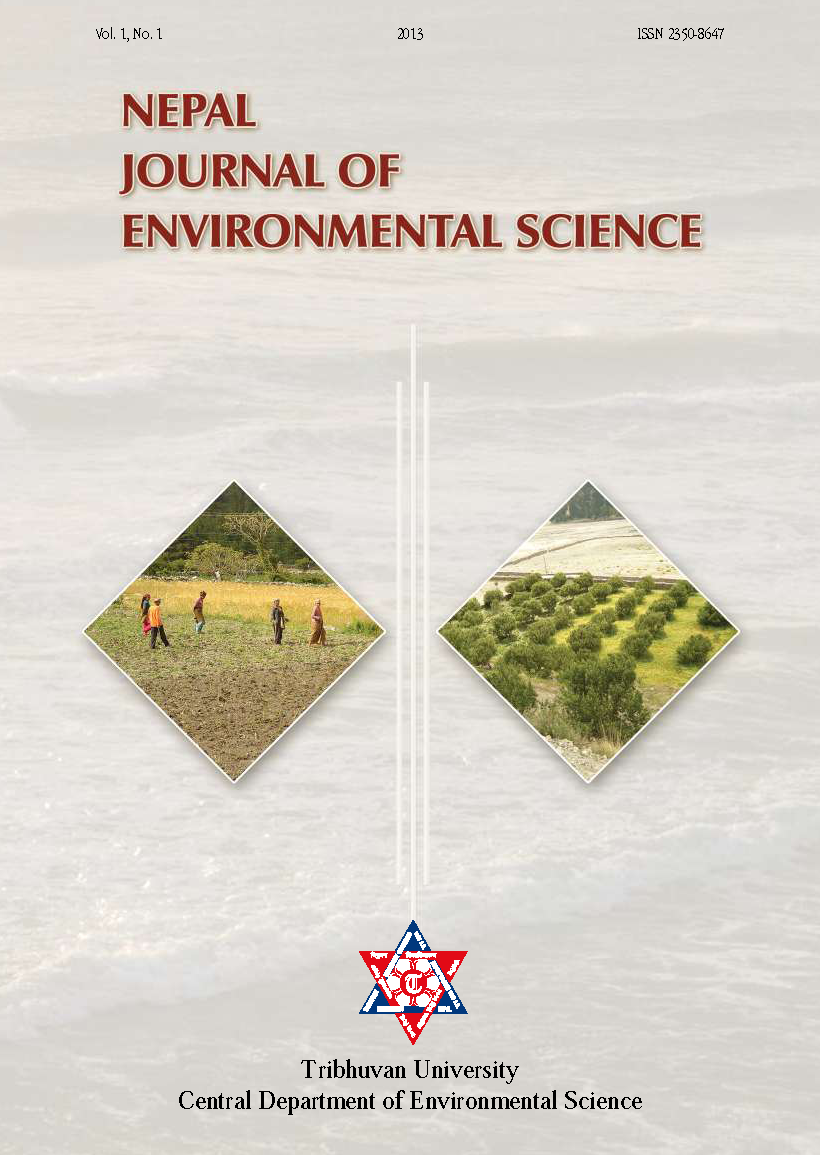Human-induced hydrological changes in Lake Aoki and their influences in limnic environment
DOI:
https://doi.org/10.3126/njes.v1i1.36541Keywords:
carbon flux, hydrological regime, littoral sediment, sedimentation rate, Biological ProductivityAbstract
The hydrological regime of Lake Aoki, central Japan has been altered when electric power plants started draining water to and from the lake since AD 1954. The use of lake water drops its level during winter and early spring and exposes the littoral sediments on the surface. In order to examine how these changes have affected the lake environment, a 23 cm long sediment core from Lake Aoki was investigated for its lithology, sedimentation rate, and total organic carbon (TOC) flux. The sediment below 10 cm was olive black silty clay, and it abruptly changed to grayish olive clayey silt above, corresponding to the timing of the hydrological perturbations (1954). The sedimentation rates were 5 mg cm-2 yr-1 and 85 mg cm-2 yr-1 before and after 1954, respectively, and the TOC content was more than eightfold higher in the post-1954 sediments. The large increase in sedimentation rate was resulted from the combine effects of high sediment load in the artificially added water and immobilization of littoral sediments during lake level lowering in early spring, whereas the elevated TOC flux was attributed to higher biological productivity stimulated by the continuous supply of additional nutrients to the lake via interbasianl mixing of water.
Downloads
Downloads
Published
How to Cite
Issue
Section
License
This license enables reusers to distribute, remix, adapt, and build upon the material in any medium or format for noncommercial purposes only, and only so long as attribution is given to the creator.

